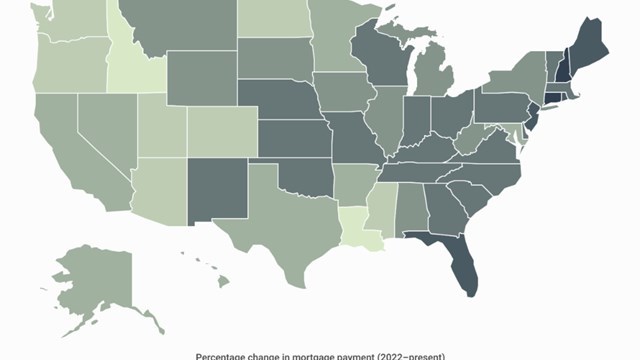The road toward having a single, comprehensive Multiple Listing Service, or MLS, in New York City has so far been long and arduous. Most major U.S. cities have had their own version since the 1970s, but for a host of reasons - size, sheer number of listings, and fierce competition for listings among brokerages - an MLS for Gotham has never really gotten off the ground. Here's a quick look at the concept's stop-and-go history, and at some of the alternatives vying with MANAR's efforts to fill the void.
In the summer of 2000, a number of key real estate players put their collective heads together in an attempt to finally bring the New York City market into step with the rest of the country and set up our very own Multiple Listing Service. Disagreements erupted between industry heavyweights, pitting The Corcoran Group and Douglas Elliman against the MLS Task Force, led by Sotheby's and Brown Harris Stevens and including a number of smaller firms. Already-strained negotiations broke down when the Corcoran/Elliman faction joined forces and combined their listings - independent of the rest of the group. The Task Force responded in kind, and what began as a noble idea looked ready to founder, until détente was reached - thanks in great part to the mediation of the Real Estate Board of New York (REBNY) - and the two groups merged their efforts to create www.nymls.com, an online listing service that included some 100 firms, representing 90 percent of the brokerages in the city.
Alas, www.nymls.com was not to last. The unification of the largest brokerages in the city was an impressive accomplishment, but one that was destined to be shelved after less than a year. For most of the site's short life, information on the how's and why's of its operation was directed through the REBNY, which adopted a cautiously optimistic approach to the project and convinced the participating firms to eschew the press and let it do the talking. At the time, REBNY president Steven Spinola told The Cooperator that it was important to remember that, despite its name, www.nymls.com was "not an MLS, but a joint Web site that goes a long way in doing what an MLS is intended to do."
Whether the dissolution of nymls.com was a result of too many cooks spoiling the soup, or just a by-product of the reality of New York City's cannibalistic real estate market is open to debate and interpretation. The bottom line is that, until MANAR introduced its plan to take another shot at establishing an MLS for New York, what held the fort were a number of smaller online services listing properties, contacts, and tips for buyers trying to negotiate the New York realty landscape. Even in the post-dot-com fallout era, a few of these sites are still up and running:
MLX.com: Established in 1993, this site features extensive property listings for both rental and purchase, plus lots of extra articles and columns on how to approach the monumental task of renting, buying, or selling an apartment in New York City. Members of the site can fill out a quick form outlining their requirements, and MLX.com will sift through its property listings and send the member a rundown of those that look like a good match. MLX.com isn't a brokerage in the traditional sense; most users of the site find what they're looking for and then retain a broker's services to negotiate and close the deal.
NYCRealty.com: Run courtesy of a group called New York City Realty Consultants, this site provides basic brokerage services via the Internet. Agents pay a set monthly fee to be a member of the service, and then - thanks to low overhead - are able to keep 100 percent of their commissions, thereby passing significant savings on to buyers.
CityRealty.com: Both brokers and buyers can benefit from checking out this site, which offers a co-op/condo directory, contacts for selling agents, and extensive databases of both sale and rental properties. Buyers and renters can perform customized searches for their ideal properties, and sellers can advertise their properties to interested parties.
In addition to these sites and MANAR's site, the majority of individual brokerages - regardless of size - have established themselves on the Web, listing properties, providing services, and making themselves known and available to larger audiences than ever before. Also continuing its efforts to benefit both sides of the industry equation, REBNY recently announced that beginning this year, residential member brokers are obligated - barring client objection - to share their apartment listings - including co-ops and condos - with fellow REBNY-member colleagues within 72 hours of obtaining the listing. REBNY's so-called "universal co-brokerage system" was passed by resolution of the organization's Residential Brokerages Division's Board of Directors and ratified by its Board of Governors, and is intended to provide consumers a larger range of options on the market. According to Spinola, "Owners' properties will have far greater exposure to the market, and buyers and renters will have a greatly increased range of choices to consider in their search for a home. All parties to Manhattan residential transactions will benefit."
MANAR's redoubled efforts aside, it remains to be seen if New York City real estate consumers will ever be served by a single, overarching MLS - or if one-stop apartment shopping is destined to join a Second Avenue subway line and friendly-and-efficient retail service on New Yorkers' ultimate wish list.






Leave a Comment